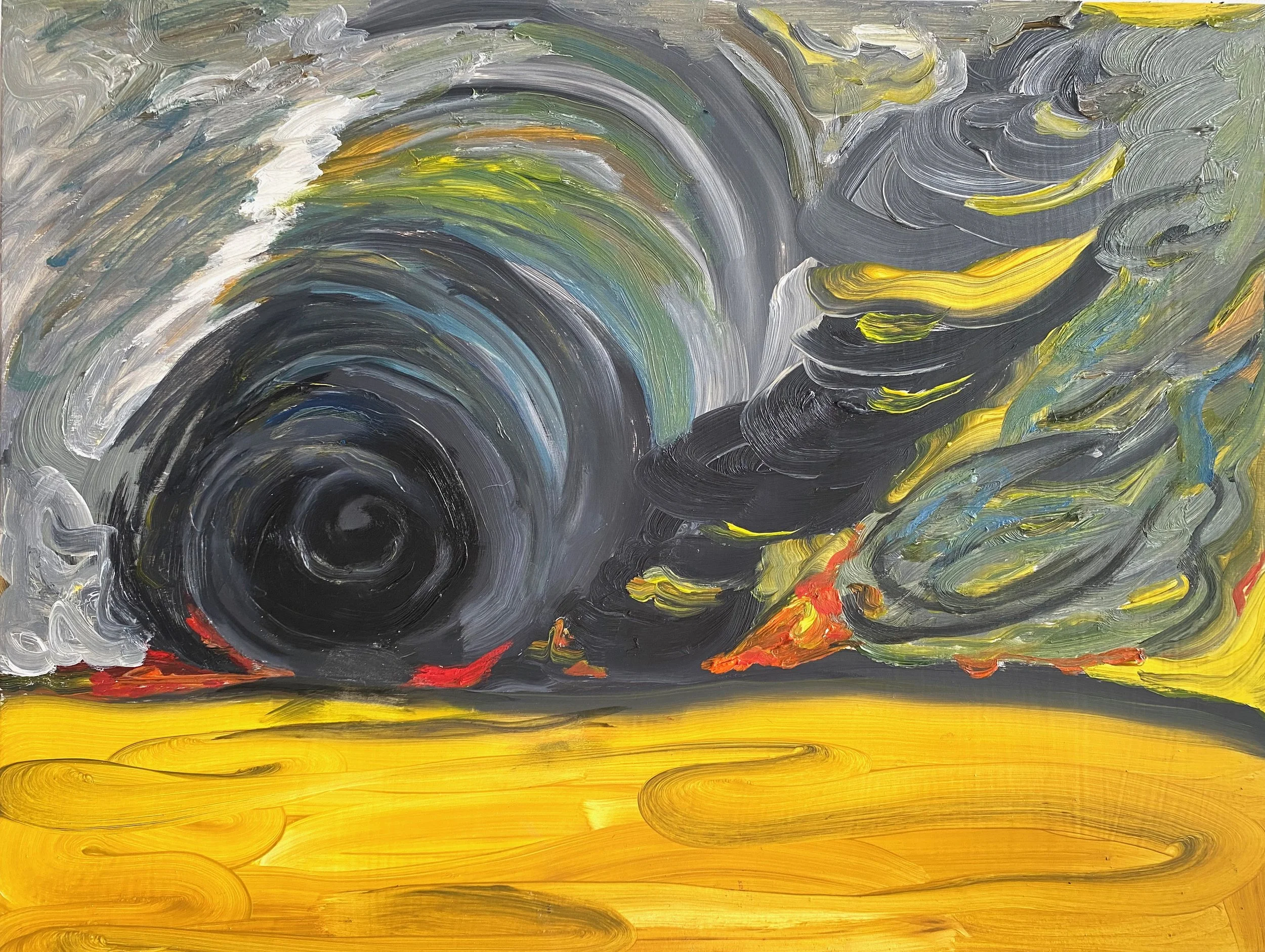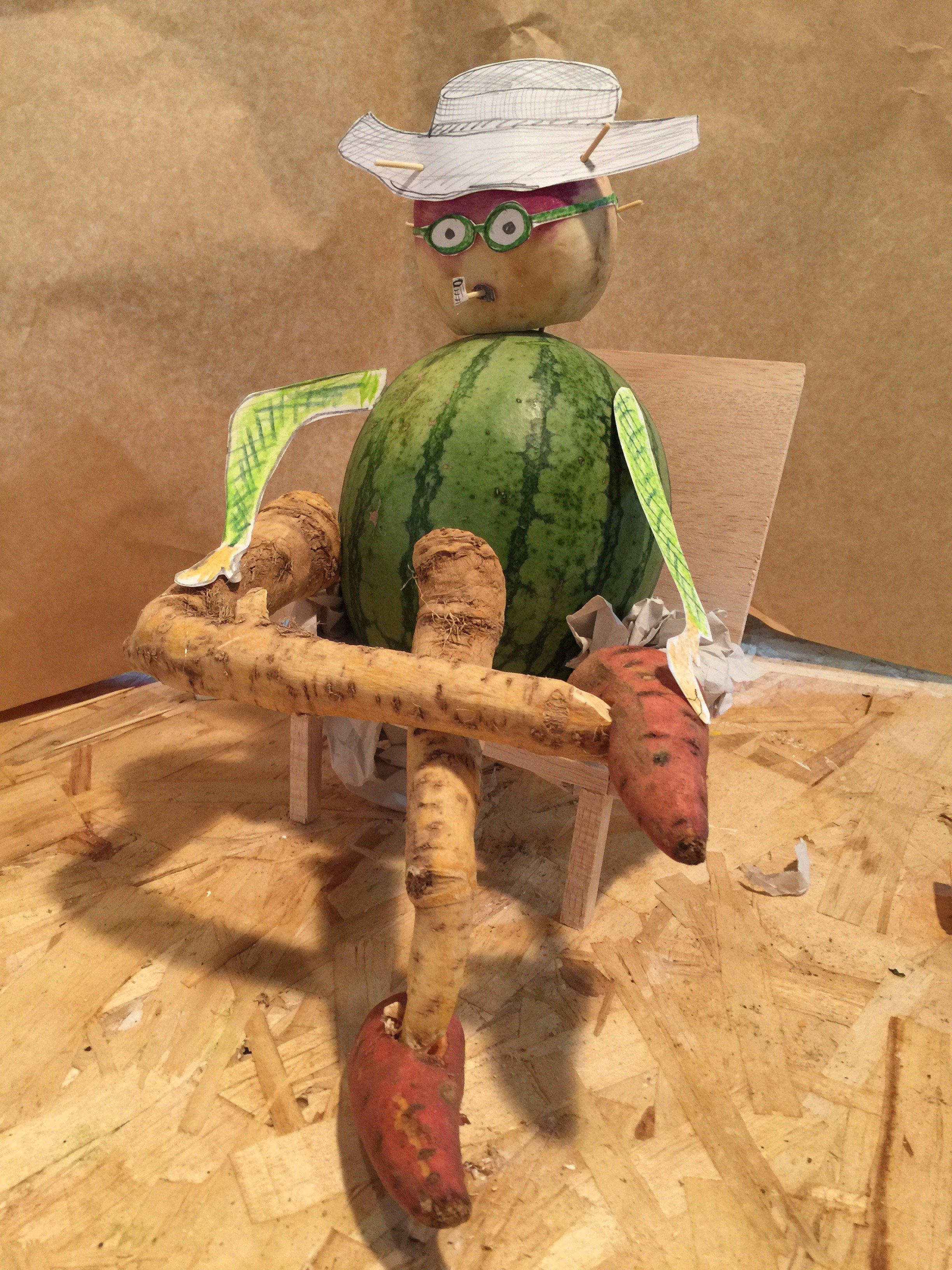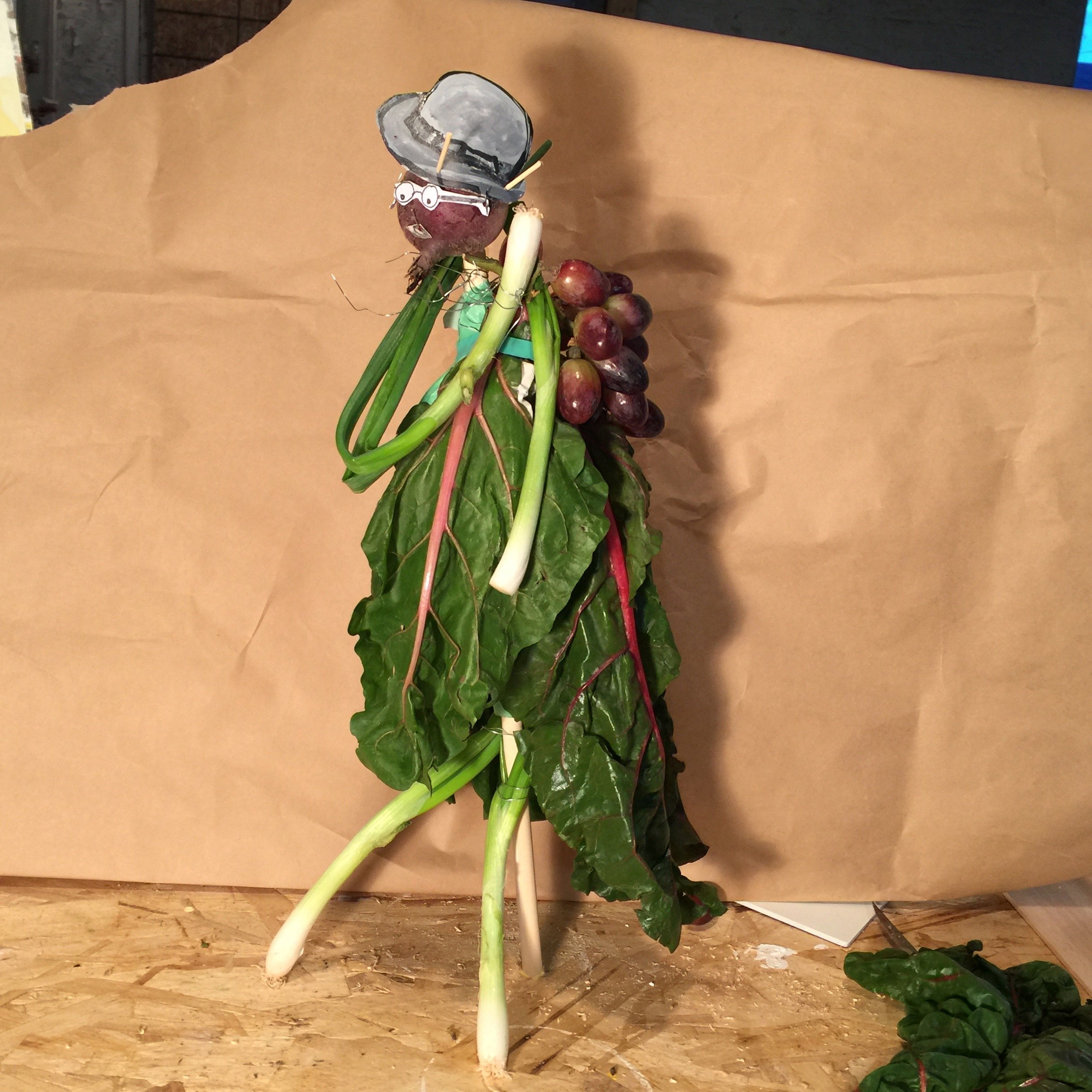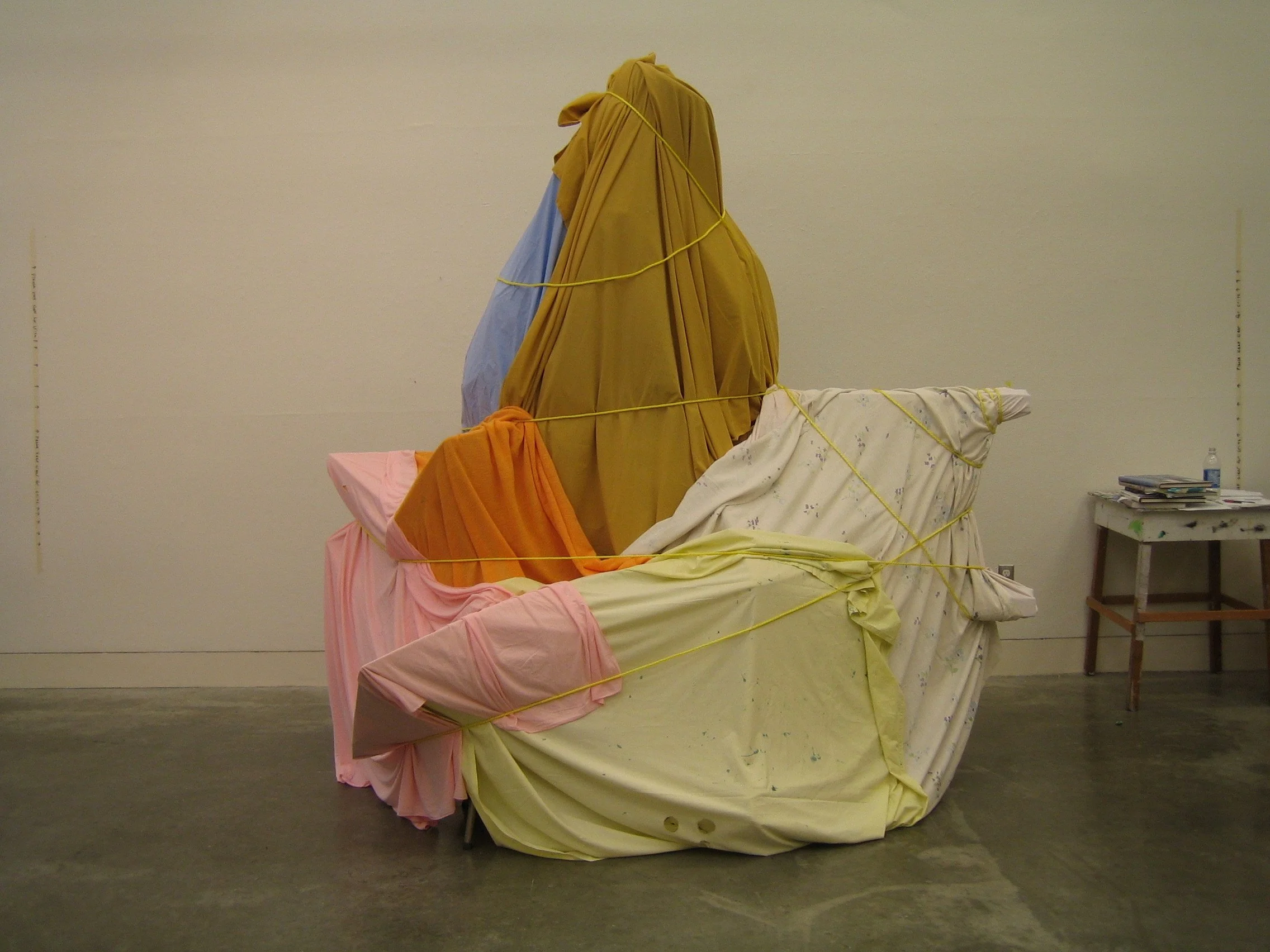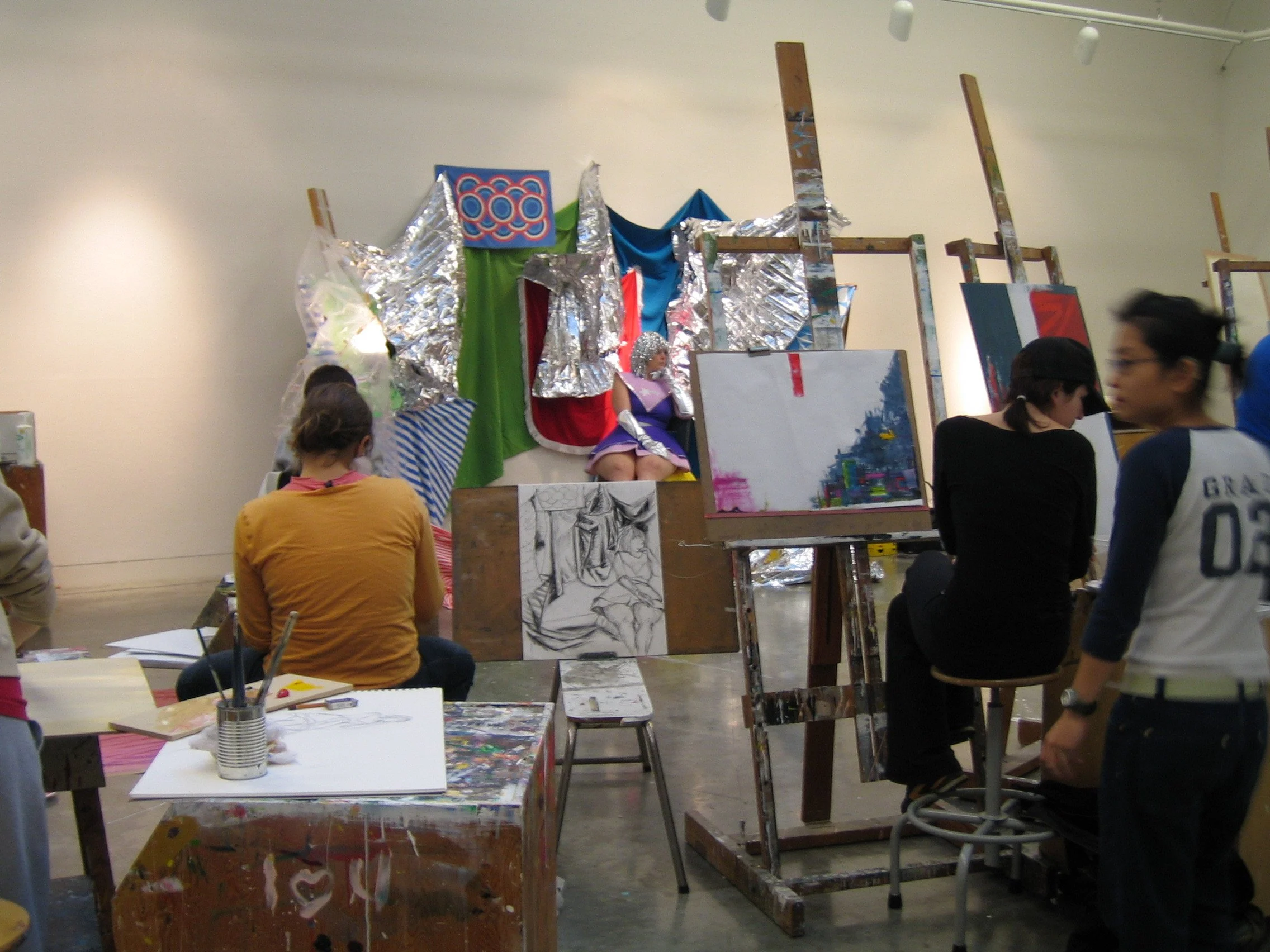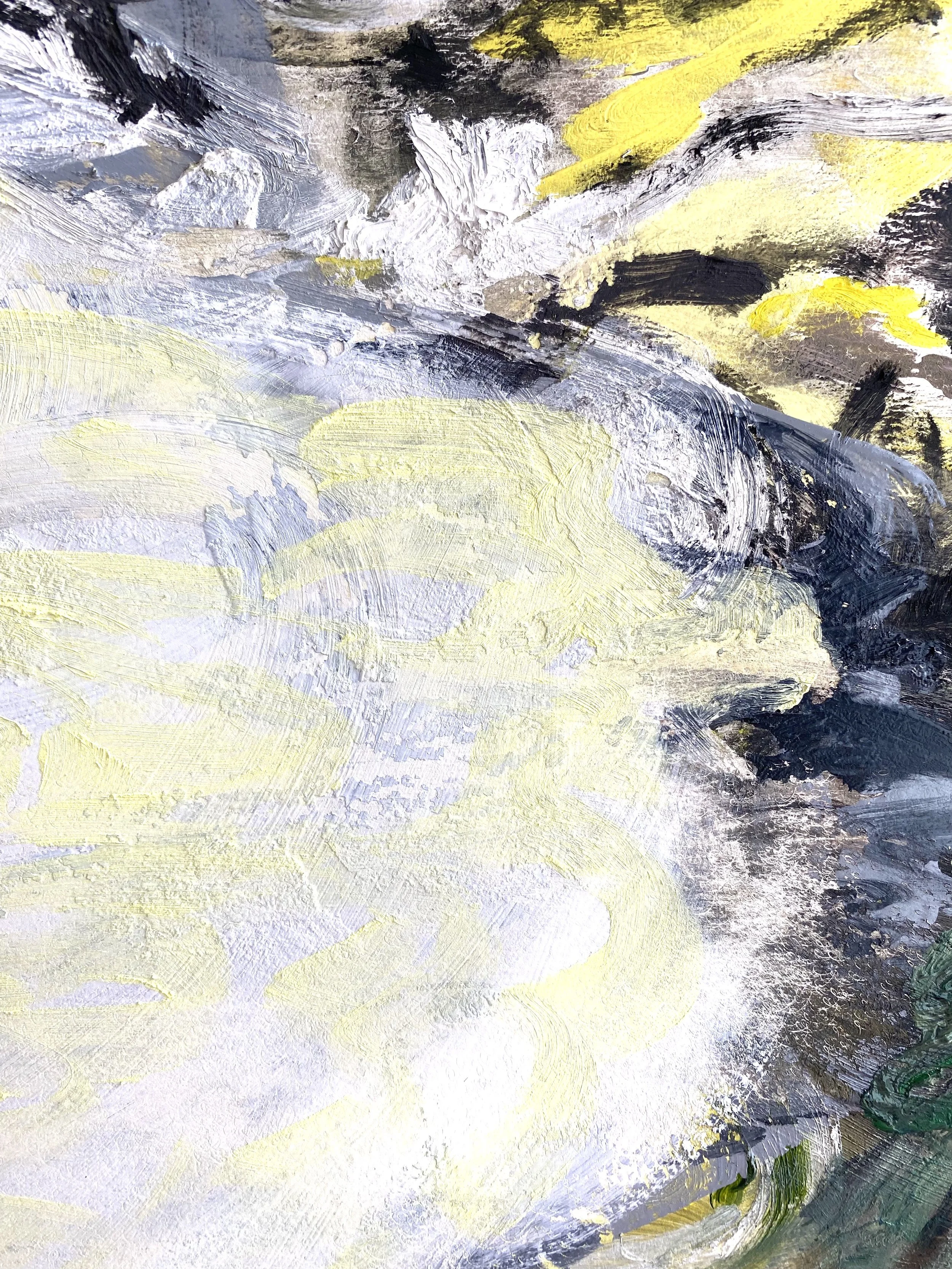I attribute agency to paintings, that is, the idea that a painting is capable of expression. A painting is more than an inanimate object. It can be alive, an ontological being. This idea could be dismissed as a metaphor, a model for a back and forth relationship between the work of art and its spectator. But I sometimes get so into it while painting that the life inside the painting becomes very real.
One could simply attribute this to child’s play, a simple engagement with the imagination, an imaginary friend. But does imaginative play account for the constant going back and forth in a communication with the painting. I contend that in the process of making the painting, there is a back and forth exchange, a give and take, not about just form and content, but about expression between two subjects: the painting and its spectator.
Think of the very basic idea of active expressive perception in everyday life. Think about the act of perception and the relationship between one’s inner emotive state and the outer world. Either the scene one beholds can influence emotion, or, the emotion one feels can influence the perception of the scene.
Does one’s feeling of grief influence how one sees, or, does seeing a mournful scene bring forth the feeling? For example, if you are embroiled in your own feelings of grief, you might project that grief onto the landscape and therefore experience grief all the more intensely. Or, if you are feeling buoyant then suddenly observe a tree branch tapping on the window in a dark wind, it might cause you to suddenly project loneliness into your soul.
In a critically aware scenario, it is possible to behold a sunset and bask in wonderment at its beauty, all the while thinking about the dust, smoke, pollutants and carbon gases which contribute to the glorious glow of the intense red sky.
Near my home in Hamilton, Ontario there is a bridge, the Skyway, which connects Hamilton to Burlington. From the bridge there is a grand view of the many functioning steel mills along the shores of Lake Ontario. I mention this here because of the intense emotion I feel every time I cross the bridge and behold the fire breathing beasts. It is like a scene from a Bosch painting. The medieval industries of rusting towers, steam rising above carried by the wind, flames shooting upward, railroad tracks and heavy 24 wheeled vehicles towing huge rolls of steel across the beaten roads of Dofasco, all leave me with an impression of awesomeness that I can only describe as perversely beautiful. The scene hits me with humanity every time, as, in my mind, I go back to the origins of civilization when iron was first pounded over a fire.
I have thought about making a painting of this scene and projecting all of my critical capacities as a painter into it, the beauty, the awesomeness, the heavy heavy carbon footprint of the landscape. (In winter the houses around the mills get dumped with brown snow.) I fear that I could never do the scene’s immensity justice, but it is always on my mind. Perhaps I feel I would need a canvas of great scale to accomplish my goal. But, then, I think of Albert Pinkham Ryder, who painted small canvases poignantly capturing moments of expressive feeling. If he could do it, perhaps so could I.
I first read about Albert Pinkham Ryder in the 1990’s when I was becoming a more adept painter. I was particularly fascinated by the fact that museum conservators stored his paintings flat. Because he worked and reworked the paintings over many years with many layers of paint, the paint is still active after over a century. The painter was known for his unorthodox use of layers of glazes, oils, and other mediums, reworked, sometimes over the course of a decade. Perhaps this confirms the theory that paintings are truly beings unto themselves, complete with paint particles that run in the night.
I finally got to see three of the paintings in person at the Detroit Institute of Arts. These little works were powerful in the way that they seemed to both receive and emit emotion. The liveliness of the paint, its cracked surface, its thick oil, though over a century old, seemed so fresh. I think the aliveness I felt residing in the oil paint compelled me to project my emotional states of melancholia, grief, and apocalyptic panic, onto these works, feelings our time in climate catastrophe, not the artist’s…. Such is the power of art.
My own painting, pictured above, is adapted from the Albert Pinkham Ryder painting, Siegfried and the Rhine Maidens, 1888, which is in the collection of The National Gallery of Art in Washington, DC. According to his own accounts, after seeing the Wagner opera Götterdämmerung, Ryder was so moved that he rushed back to his studio to begin this painting. The particular scene that Ryder painted depicts three river spirits, the maidens, bathing in the moonlit river as a horseman, the hero of the opera, rides toward them on a dark forest trail, with trees swaying in the wind. There are many twists and turns in the opera, but suffice it to say that it was received by the American public at The Met with religious fervor. Such intense emotion was poured into Ryder’s painting, through which one can feel rapture, erotic joy and menacing doom.
Ryder’s Siegfried and the Rhine Maidens is both my foil and my mate. I chose to paint it on a rough jute surface to give the paint a struggle…a struggle to express, a struggle to survive, a struggle to represent. In my version of the painting, the human figures are absent and in their place a bird is fallen and dead and occupying the foreground of the scene. The romantic ecstasy contained in the landscape is thwarted by painting’s rough surface which lends the act of depiction incomprehension, blurriness, and clumsiness. While the dear sweet bird, large within the tiny scale of the landscape, presents mournful loss in what, in today’s world, could yield an impending catastrophe, for all bird species, within the night scene.
I close with an image of Ryder’s painting, Dead Bird, 1890. It is impossible for me to see this work today without feeling the flow of mournful loss. With impending climate catastrophe there is more loss than can be fathomed, here, projected onto a little bird.
